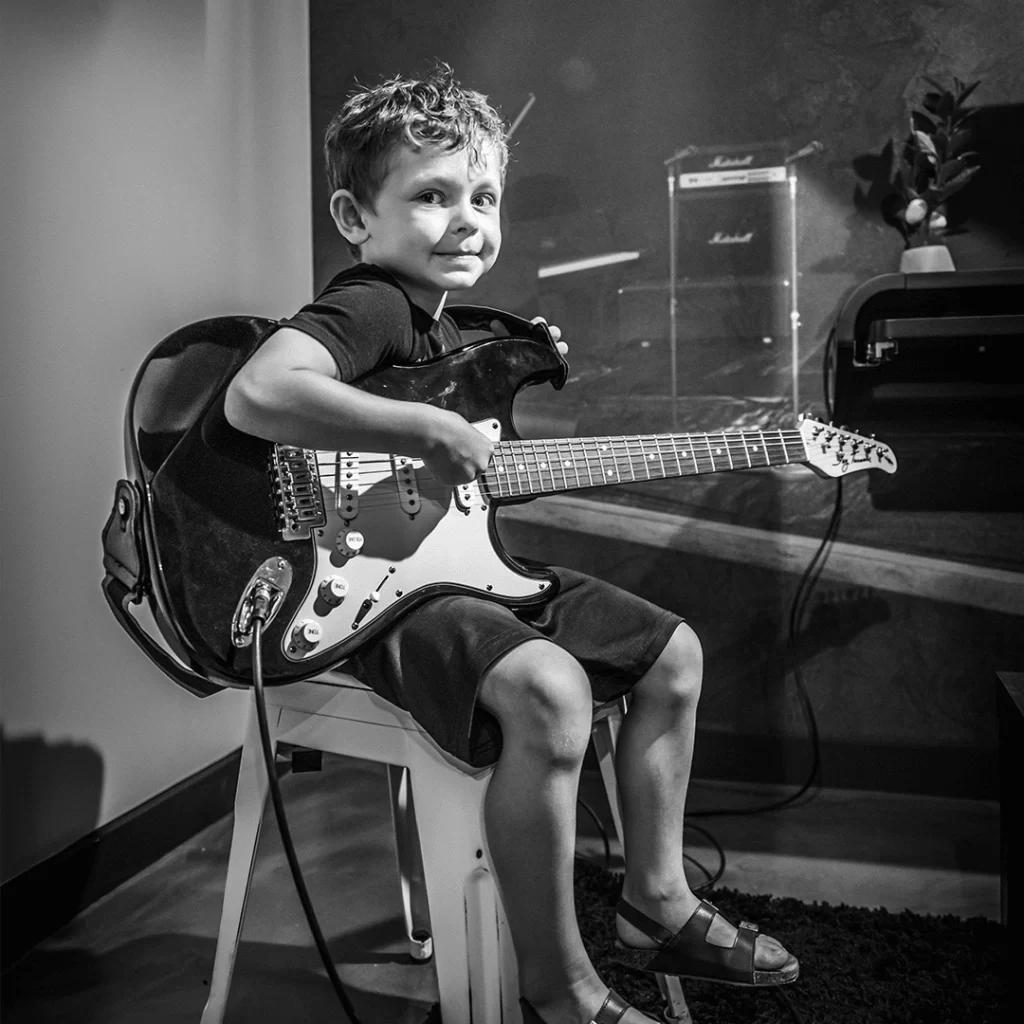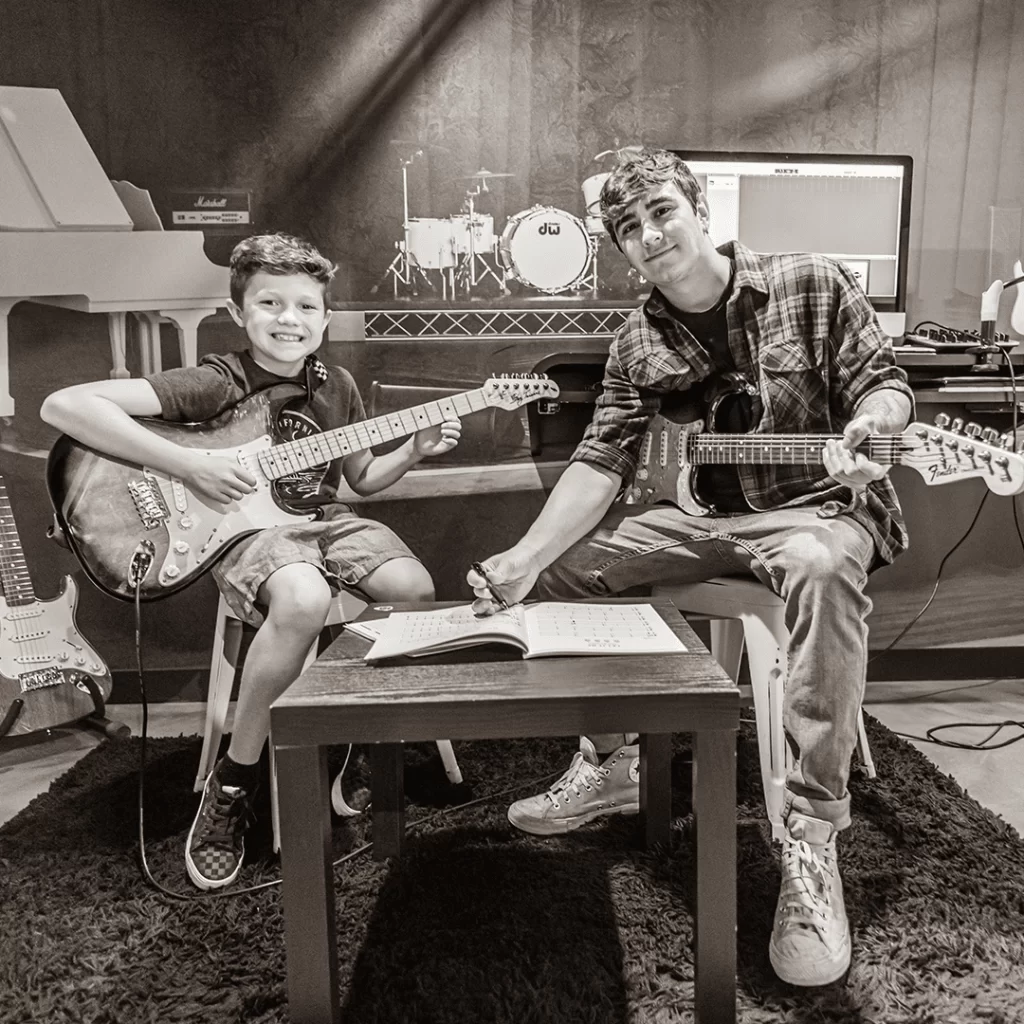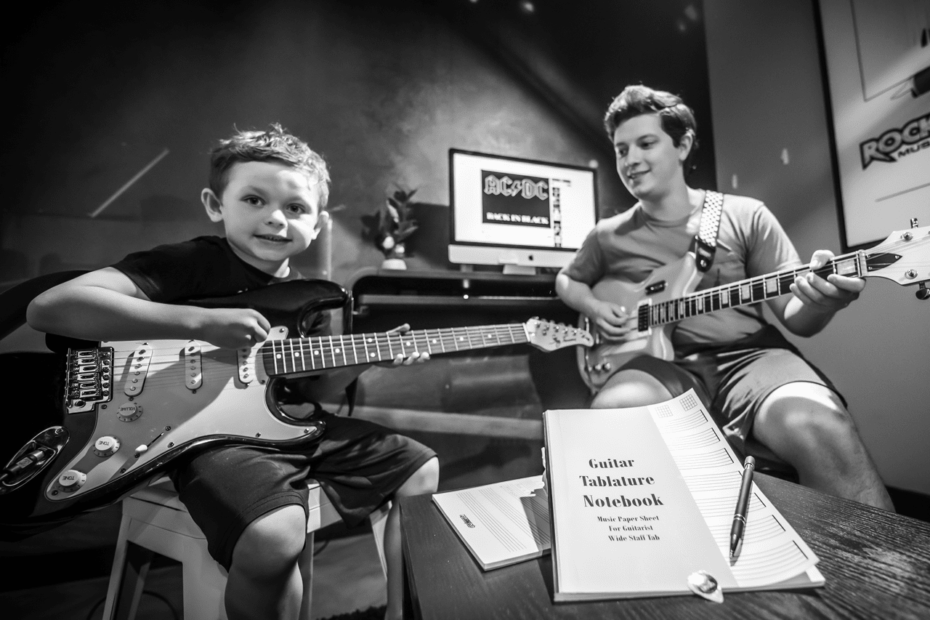Non-musicians often think of rhythm guitarists as the “back line” of the band, but that couldn’t be further from the truth. If a song is not played in the right rhythm, it falls apart and becomes unbearable to listen to. Even though keeping the band (and the songs) together is the main role of rhythm guitarists, there’s much more to this instrument than that.
We have talked to expert guitar coaches from The Music Box about what a rhythm guitar is, how rhythm guitarists should interact with their bandmates, and ultimately, what they can do to improve the overall sound of their bands or the songs they’re playing.
In this article, The Music Box guitar coaches will share valuable advice and tips for up-and-coming rhythm guitar players, but first, let’s see what sets it apart from the solo guitar.
What Is A Rhythm Guitar?
Rhythm guitar can be an acoustic, semi-acoustic, or electric instrument that is primarily used to play chords and riffs. As opposed to solo guitarists, rhythm guitar players rarely get to noodle too much on their instruments and are more focused on delivering chunky, concise plays.
This doesn’t necessarily mean that rhythm guitar players are just riffing machines. Depending on the skills and ambitions of the player, the role of a rhythm guitar can also touch on fills, harmonizations, and even playing secondary solos if there’s space for them.
Ultimately, rhythm guitarists aren’t required to spend countless hours learning how to shred, tap, and slide as fast and accurately as they can – they usually work on beefing up their tone, refining their picking techniques, and playing with a metronome. Swing by our Instagram page if you want to see how far our rhythm guitar students have come after enrolling in The Music Box.

What do Rhythm Guitarists Do in a Band?
While lead/solo guitar players often play higher notes and chords, it’s the role of a rhythm guitarist to play riffs and chords on the lower frets. Their lines form the foundation of the song and coincide with the bass lines – together, the bassist and the rhythm player create a proverbial sonic canvas for the vocalist and the solo guitarist to “paint” on.
That ties into the second role of rhythm guitar players – creating the “bare bones” of authored songs (in bands that are focused on creating original content). Even any musician can contribute riffs, licks, or parts of a song to the band, it often falls to rhythm guitarists to create riffs that fit the band’s style. Songwriting lessons are an integral part of our curriculum, so check us out on TikTok if you want to hear our students rocking out.
Solo guitar players sometimes take too long to compose their solo parts; drummers and bassists work on their own lines, and the singers usually wait for the piece to come together. Even though being a songwriter is not a prerequisite for rhythm guitarists, they usually know which chords and riffs they’ve used in previous songs and tend to contribute original ideas more often than others.
How Do Rhythm Guitar Players Interact With Other Band Members?
Rhythm guitarists communicate with the entire group every step of the way – when rehearsing, playing gigs, composing songs, and recording new material.
A rhythm player should work with the bassist to configure which lines would fit the chords and riffs; they typically make arrangements in collaboration with the drummer so that every accentuated note can be followed with the appropriate drum part.
Vocalists usually have a lot of options when it comes to singing songs a certain way, and it’s up to the rhythm player to find the chords that could fit into their singer’s ideas.
Rhythm players typically spend most time figuring out parts with the solo guitarist. Having two guitars allows the band to flexibly arrange parts and melodies that could overlap and intersect, or even go in completely opposite directions.
Building student bands and hosting live gigs in a controlled environment is what separates The Music Box from contemporary alternatives. Come to our Facebook page if you want to learn more.

Keeping Time & Keeping Things Simple
One of the most important attributes of a good rhythm guitar player is the ability to not “overplay”. To be cognizant of how many riffs or notes should fit inside a bar, and to ensure the song is in the right vibe.
Even heavy rock and metal bands abide by these unwritten rules. No matter how fast or complex a song is, rhythm guitar players are tasked with making it listenable. This is done by carefully choosing the notes for each part, palm-muting, and relying on subtle pedal effects, as well as using the right gear.
Rhythm guitarists can afford to take the “lazy” route if the song demands it. Plucking open notes in the right tempo is often the answer to elaborate licks solo guitarists and bassists sometimes play.
Most importantly, rhythm guitarists should excel in time-keeping. Even though all musicians could benefit from playing with a metronome, rhythm guitar players should learn how to count in 0.1-second increments and spot mistakes instantly.
Becoming an Adept Rhythm Guitar Player & How The Music Box Can Help
We’ve taught generations of guitar players who looked up to iconic rhythm guitarists like Malcolm Young, Adrian Smith, Joe Duplantier, and Jerry Cantrel how to play their chosen instruments.
Our team of guitar coaches boasts decades of combined experience and strives to ensure all of our students meet their desired goals in music, whether it learning how to play guitar for fun or shooting for a professional career in the music industry.
Besides top-tier rhythm guitar lessons, we offer a barrage of unique perks to our students. They’ll get to form rock bands with their classmates, perform in controlled environments, go on to play live gigs in venues owned by our partners and learn how to record music.
If you’re ready to start learning everything there is to know about rhythm guitar, we’re headquartered at 4321 Gunn Highway in Carrollwood, Tampa, so swing by our offices or simply follow this link.



